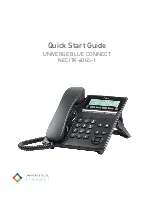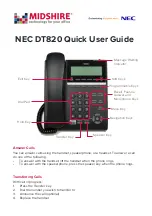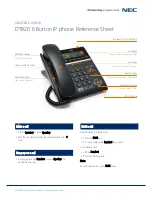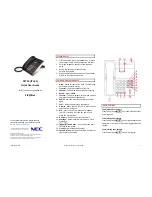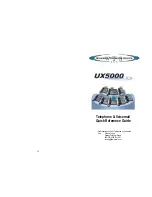
- 29 -
LGE Internal Use Only
Copyright © 2007 LG Electronics. Inc. All right reserved.
Only for training and service purposes
3. TECHNICAL BRIEF
3.5 Off-chip RF Components
3.5.1 Front End Module(FL500)
Front End module integrates antenna switch module and GSM Rx filter.
The antenna switch module allows multiple operating bands and modes to share the same antenna. In
the KS10 design, a common antenna connects to one of six paths:
1) UMTS-2100 Rx/Tx, 2) EGSM Rx, 3) DCS-1800 Rx, 4) PCS-1900 Rx, 5)EGSM Tx, and 6) DCS-
1800, PCS-1900 Tx. UMTS operation requires simultaneous reception and transmission, so the
UMTS Rx/Tx connection is routed to a duplexer that separates receive and transmit signals. GSM
band of operation is time division duplexed, so only the receiver or transmitter is active at any time
and a frequency duplexer is not required. The module includes lowpass filters for the GSM bands
transmit paths to reduce out-of-band emissions, PA harmonics in particular.
The GSM mode RF filters are located before their LNAs, so their insertion losses are extremely critical
(1.3 dB typical). Other important parameters are:
■
Out-of-band rejection or attenuation levels
❏
Far out-of-band signals - ranging from DC up to the first band of particular concern and from the
last band of particular concern to beyond three times the highest passband frequency.
❏
Frequencies of particular concern . bands known to include other wireless transmitters that may
deliver significant power levels to the receiver input.
❏
GSM band receivers operate while the handset transmitters are off so there are no Txband
leakage attenuation requirements.
■
Phase and amplitude balance - the UMTS discussion presented above applies for GSM bands as
well. See the data sheet for specific values. Of course, passband ripple and return loss are still
important in all cases for the same reasons explained in the antenna switch module and duplexer
sections.
3.5.2 UMTS duplexer (U506)
A UMTS duplexer splits a single operating band into receive and transmit paths. Important
performance requirements include:
- Insertion loss . this component is also in the receive and transmit paths; In the KS10 typical losses:
UMTS Tx = 1.45 dB, UMTS Rx = 1.86 dB.
- Out-of-band rejection or attenuation . the duplexer provides input selectivity for the receiver, output
filtering for the transmitter, and isolation between the two. Rejection levels for both paths are
specified over a number of frequency ranges. Two Tx-to-Rx isolation levels are critical to receiver
performance:
- Rx-band isolation . the transmitter is specified for out-of-band noise falling into the Rx band. This
noise leaks from the transmit path into the receive path, and must be limited to avoid degrading
receiver sensitivity. The required Rx-band isolation depends on the PA out of-band noise levels and
Rx-band losses between the PA and LNA. Typical duplexer Rx band isolation value is 51 dB.
Содержание KS10
Страница 1: ...Date July 2007 Issue 1 0 Service Manual Model KS10 Service Manual KS10 Internal Use Only ...
Страница 207: ... 208 LGE Internal Use Only Copyright 2007 LG Electronics Inc All right reserved Only for training and service purposes ...
Страница 214: ... 215 LGE Internal Use Only Copyright 2007 LG Electronics Inc All right reserved Only for training and service purposes ...
Страница 216: ... 217 LGE Internal Use Only Copyright 2007 LG Electronics Inc All right reserved Only for training and service purposes ...
Страница 217: ... 218 LGE Internal Use Only Copyright 2007 LG Electronics Inc All right reserved Only for training and service purposes ...
Страница 246: ...Note ...
Страница 247: ...Note ...































